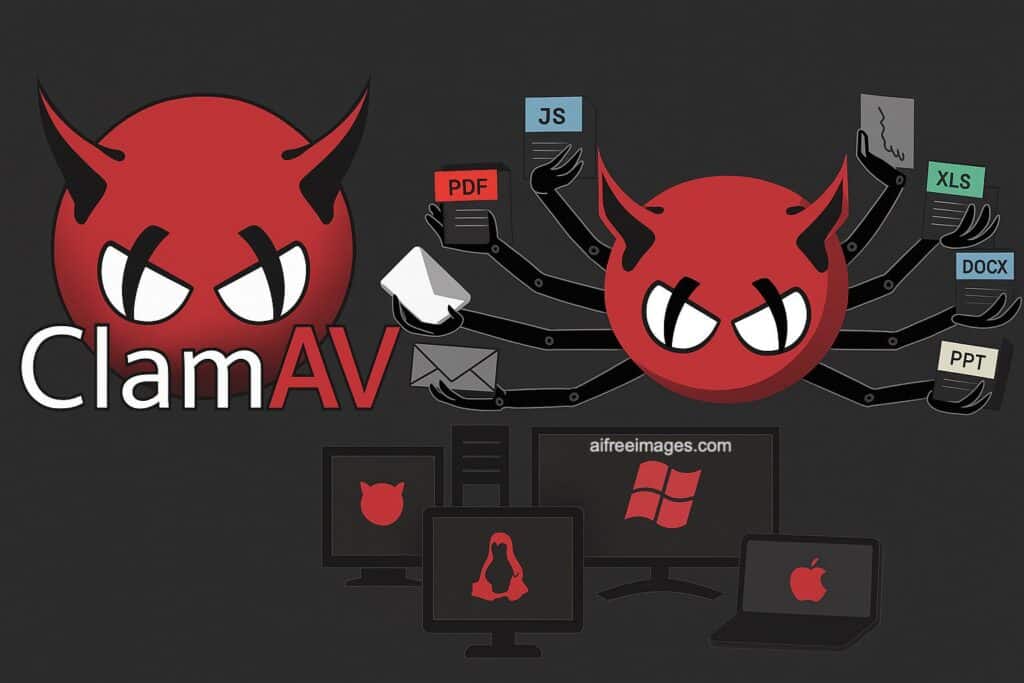In today’s digital landscape, cybersecurity has become a top priority for both individuals and organizations. Robust, reliable tools are critical to safeguarding systems from viruses, trojans, and a wide variety of malware. Among open source antivirus solutions, ClamAV stands out as one of the most recognized and trusted options—especially in GNU/Linux environments and server infrastructures, but also with support for Windows and macOS.
Origins and Evolution of ClamAV
ClamAV is an open source project launched in Poland in 2001 by Tomasz Kojm. Its growth and adoption have been constant, driven by a collaborative and transparent philosophy that has garnered support from universities, corporations, and a global community of contributors. The project joined Sourcefire in 2007 and, after Cisco’s acquisition of Sourcefire, is now maintained by Cisco’s Talos cybersecurity division.
Continuous community involvement and corporate backing have ensured that ClamAV’s virus signature database is updated multiple times a day, keeping pace with new threats and maintaining its reputation for reliability.
Technical Features and Main Advantages
Written primarily in C and C++, ClamAV is truly cross-platform, supporting GNU/Linux, FreeBSD, Solaris, macOS, and Windows. Its modular, multithreaded architecture, anchored by the clamav-daemon background process, enables fast, efficient scanning of files and directories—even under heavy server loads.
Key features include:
- On-demand and scheduled scanning of individual files, directories, or entire systems.
- Integration with mail servers to scan email attachments and messages for malware.
- Real-time file monitoring (on Linux), with immediate detection and quarantine of infected files.
- Support for a wide range of archive and document formats: ZIP, RAR, TAR, PDF, HTML, and more.
- Automated database updates via the
freshclamservice to detect the latest threats. - Advanced quarantine management and handling of false positives.
- Multilingual support and a variety of user interfaces, including GUIs for desktop environments.
Recommended Use Cases and Practical Scenarios
The myth that “Linux systems don’t get viruses” still lingers, but threats do exist—even if less frequent than on Windows. ClamAV is the tool of choice for:
- Protecting mail servers and file-sharing platforms against malware propagation.
- Compliance with corporate security certifications that mandate antivirus solutions, regardless of OS.
- Preventing your infrastructure from being an unwitting channel for malware to reach less secure systems.
- Ensuring critical infrastructure and corporate environments remain secure.
ClamAV’s role in hybrid environments is particularly crucial for filtering threats before they reach endpoints or other vulnerable platforms.
Installation, Configuration, and Getting Started
ClamAV is included in the official repositories of all major Linux distributions, making installation a breeze. For example, on Debian or Ubuntu:
sudo apt-get install clamav clamav-daemon
Code language: JavaScript (javascript)After installation, immediately update the virus database:
sudo freshclam
Then, enable and start the daemon:
sudo systemctl enable clamav-daemon
sudo systemctl start clamav-daemon
Configuration can be tailored for optimal integration:
- Exclude system directories (like
/proc,/sys,/dev) that cannot be scanned. - Increase recursion limits if you have deeply nested directories.
- Run scans as root or with the
--fdpassoption to access all files. - Leverage multi-core CPUs using the
--multiscanoption for faster parallel scanning.
Automation, Customization, and Advanced Features
ClamAV makes it simple to schedule regular scans using cron jobs or systemd timers, ensuring constant protection with minimal manual intervention. For advanced workflows:
- Automate email notifications for scan results or errors.
- Script integrations for incident response or remediation.
- Audit scan logs to track historical threats and optimize your configuration.
- Use Yara rules for custom malware detection.
Licensing, Community, and Developer Support
As a GPLv2-licensed open source tool, ClamAV is entirely free for both personal and enterprise use. Its vibrant community maintains extensive documentation, forums, and real-time support channels. Developers can contribute signatures, code, or documentation—and integrate ClamAV’s engine into other applications via APIs.
The project’s rapid development cycle ensures regular release of new versions and features, as well as instant responses to emerging threats.
Advanced Integration and Ecosystem
ClamAV isn’t just an antivirus—it’s a powerful scanning engine that can be embedded in corporate security solutions or custom automation pipelines. Docker images and containerized deployments are readily available, making integration with modern DevOps workflows straightforward.
The system supports a broad range of compressed formats and complex document types, enabling forensic analysis, mail server protection, and defense for shared storage systems.
Strengths and Potential Limitations
Strengths:
- 100% open source and cost-free, with no ads or licensing traps.
- Cross-platform and easy to integrate with other systems.
- Highly active community and rapid update cycle.
- Handles a vast variety of file formats, including complex archives.
- Perfect for mail servers, shared file environments, and forensic analysis.
Possible Limitations:
- Lacks some advanced features found in commercial products, such as web filtering, behavioral analysis, or integrated firewall.
- On Linux, real-time access protection is not enabled by default and may require additional setup.
- Desktop users seeking fully automated, proactive protection might find more comprehensive solutions elsewhere.
Conclusion
ClamAV has become the de facto standard for antivirus protection on Linux servers and in corporate environments worldwide. Its robust, flexible engine, responsive community, and continual evolution ensure reliable defense against malware—even in critical and demanding infrastructures. For those seeking a free, powerful, and constantly updated tool, ClamAV remains a vital component of any serious cybersecurity strategy.

